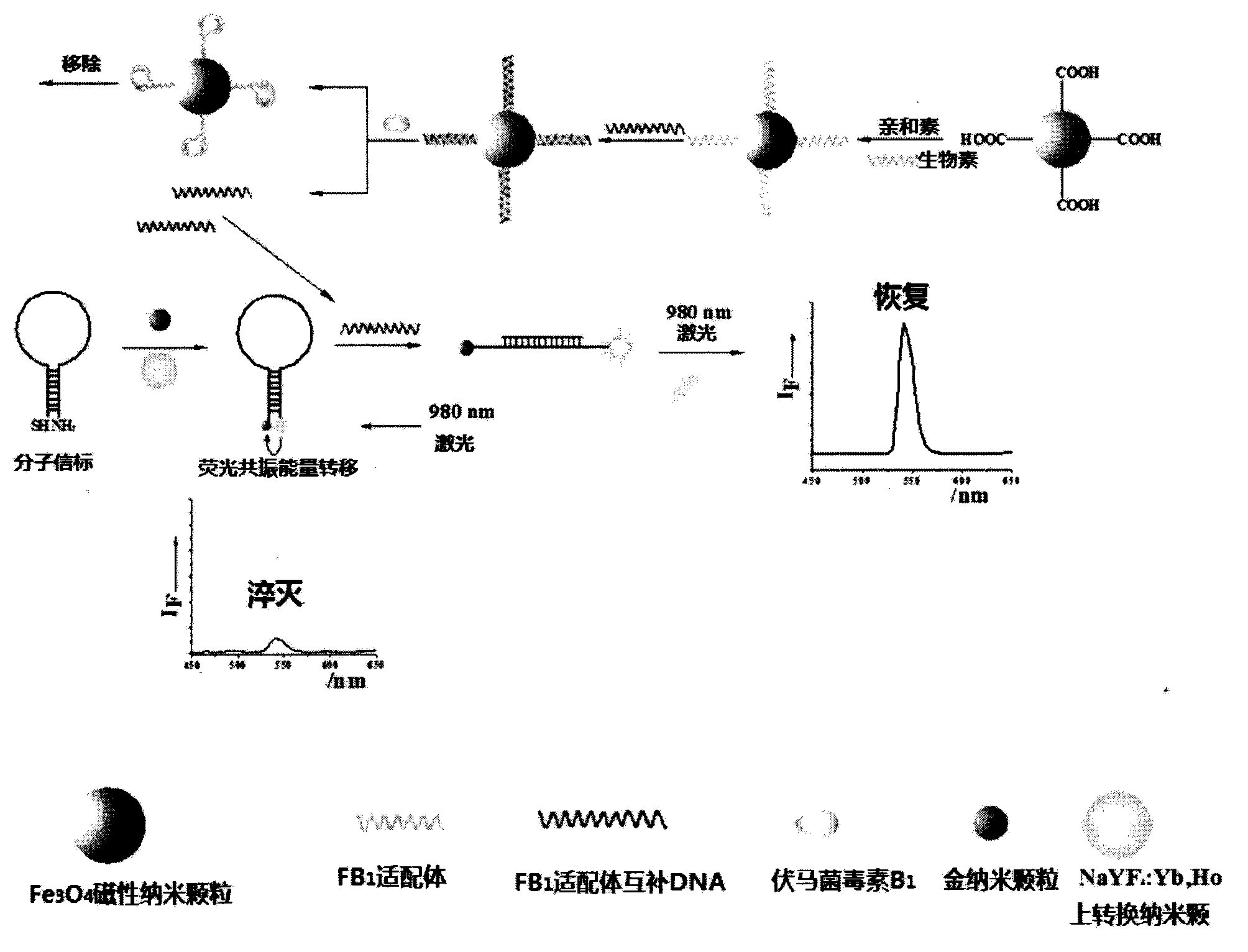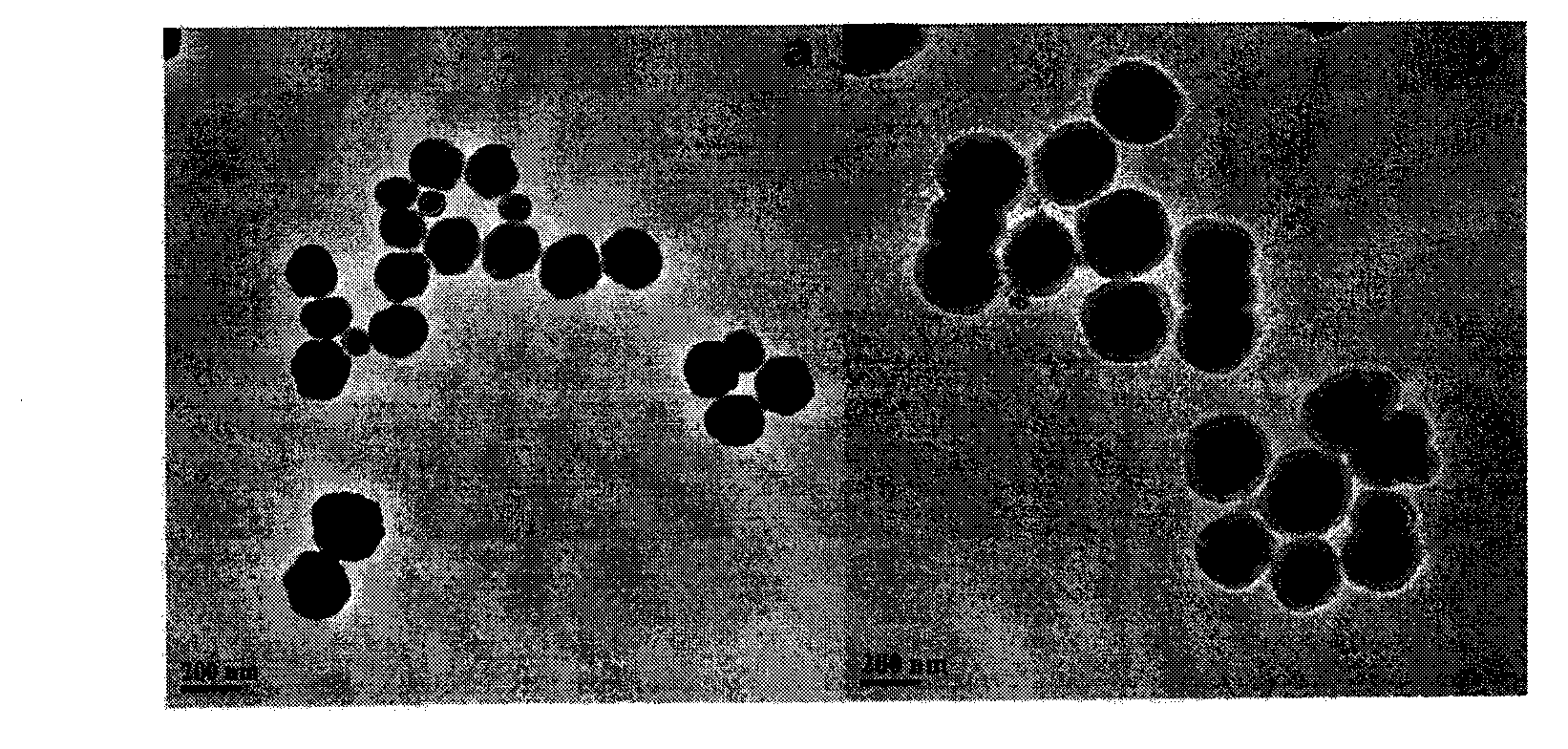Method for detecting fumonisin B1 based on fluorescence resonance energy transfer
A technology of fluorescence resonance energy and fumonisin, which is applied in the field of nanomaterials and analytical chemistry, can solve the problems of high cost, cumbersome operation, and high sample processing requirements, improve accuracy and stability, simplify pretreatment steps, shorten The effect of detection time
- Summary
- Abstract
- Description
- Claims
- Application Information
AI Technical Summary
Problems solved by technology
Method used
Image
Examples
Embodiment 1
[0027] Example 1: Fumonisin B in actual corn samples 1 Establishment of detection standard curve and detection sample pretreatment: crush and sieve corn at high speed, weigh 20g into a 100mL flask, add 5gNaCl, 80% ethanol aqueous solution, mix well, place in a homogenizer for high-speed stirring and extraction for 2min, and stand still for a while , filter, take 10mL of the filtrate and place it in a 50mL flask, stir and extract it again in a homogenizer at high speed for 2min, after resting, filter it with ultra-fine glass fiber filter paper until the filtrate is clear, collect the filtrate for later use.
[0028] Purchase 15 different types of corn from four local farmer's markets, and use the method of the present invention and enzyme-linked immunoassay to measure fumonisin B in them respectively 1 The results are shown in Table 1, and the obtained data were compared for correlation, the result was P1 detection.
[0029] Table 1: The actual sample detection of corn, the me...
Embodiment 2
[0032] Example 2: Fumonisin B in actual corn samples 1 The detection and standard addition recovery test sample pretreatment is the same as in Example 1.
[0033] 15 groups of fumonisins B obtained from Example 1 1 Select three groups from the concentration data as the background value, and then select three different concentrations of FB of 0.5ng / mL, 5.0ng / mL, and 50ng / mL 1 Standards are added to the analyte respectively, and the method of the present invention is used to detect again the FB 1 content to obtain the detection value. Recovery %=(detection value-background value) / addition amount×100%. From the results of Table 2, the rate of recovery is 91.1% to 120%, indicating that the present invention is stable, sensitive and accurate, and is suitable for FB in corn actual samples 1 detection.
[0034] Table 2: Fumonisin B in actual corn samples 1 Detection and spike recovery
[0035]
PUM
| Property | Measurement | Unit |
|---|---|---|
| particle diameter | aaaaa | aaaaa |
Abstract
Description
Claims
Application Information
 Login to View More
Login to View More - R&D
- Intellectual Property
- Life Sciences
- Materials
- Tech Scout
- Unparalleled Data Quality
- Higher Quality Content
- 60% Fewer Hallucinations
Browse by: Latest US Patents, China's latest patents, Technical Efficacy Thesaurus, Application Domain, Technology Topic, Popular Technical Reports.
© 2025 PatSnap. All rights reserved.Legal|Privacy policy|Modern Slavery Act Transparency Statement|Sitemap|About US| Contact US: help@patsnap.com



